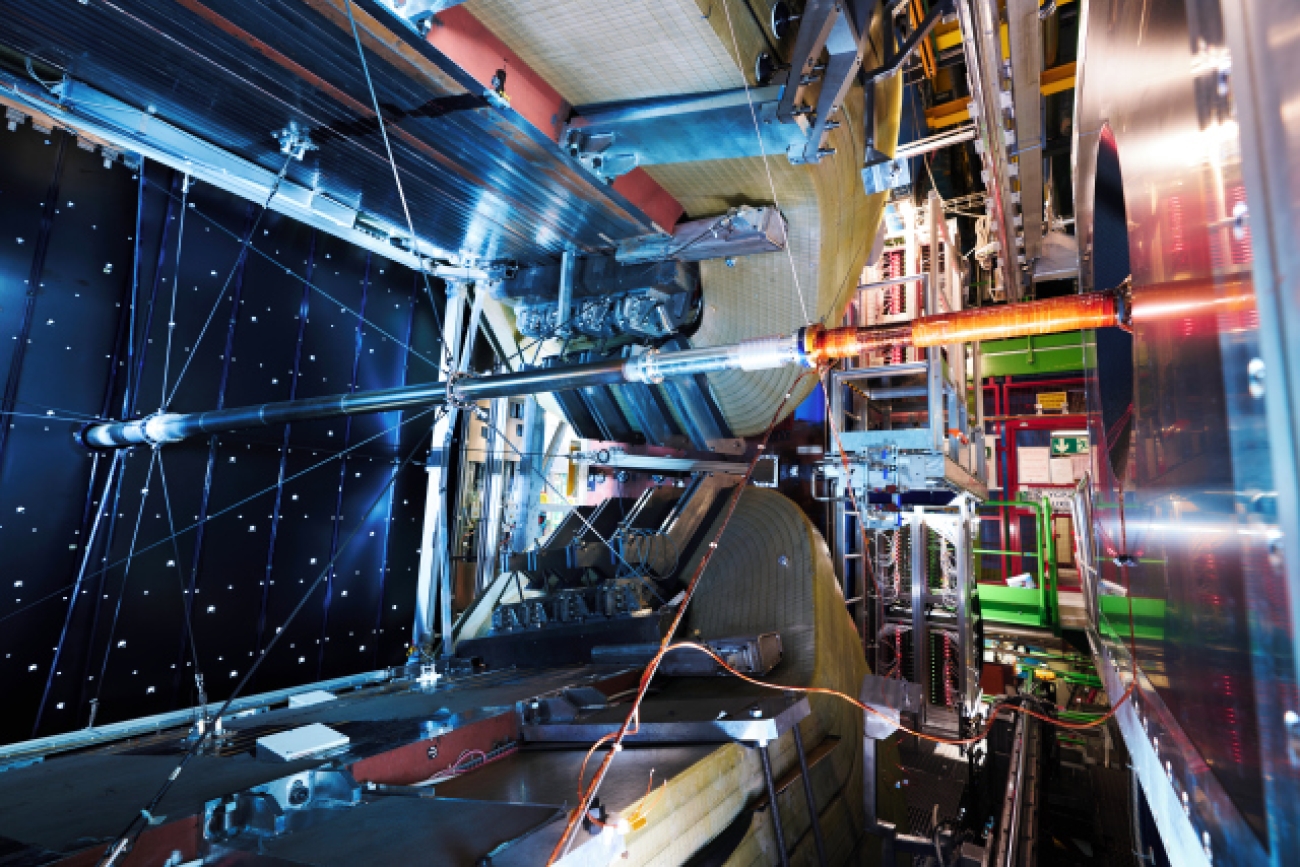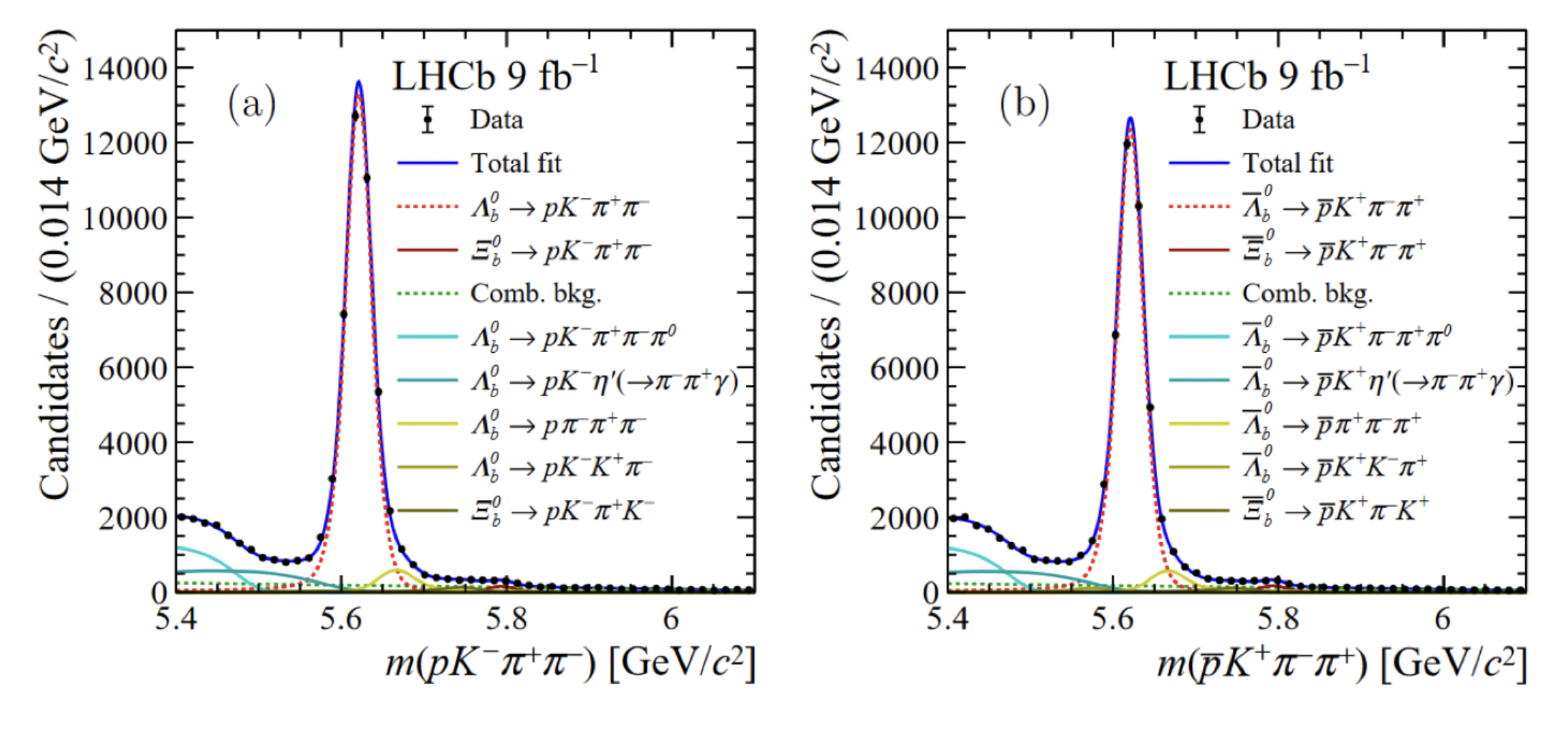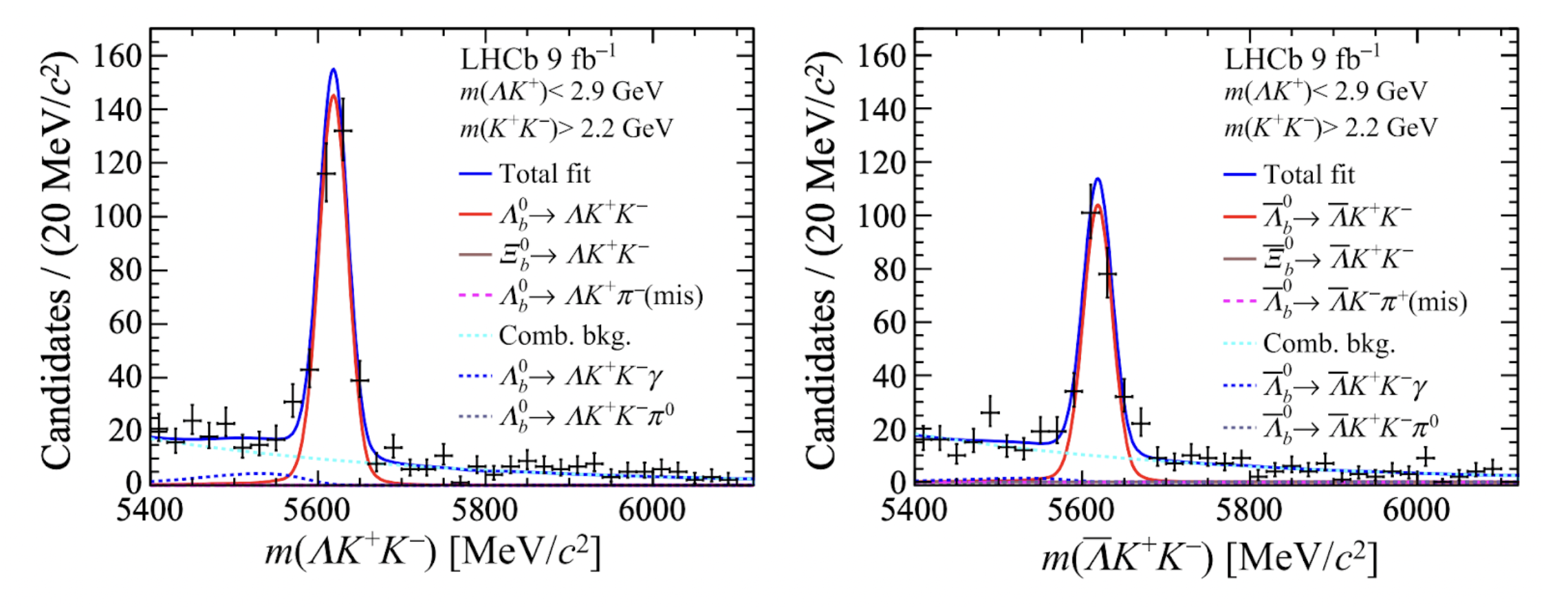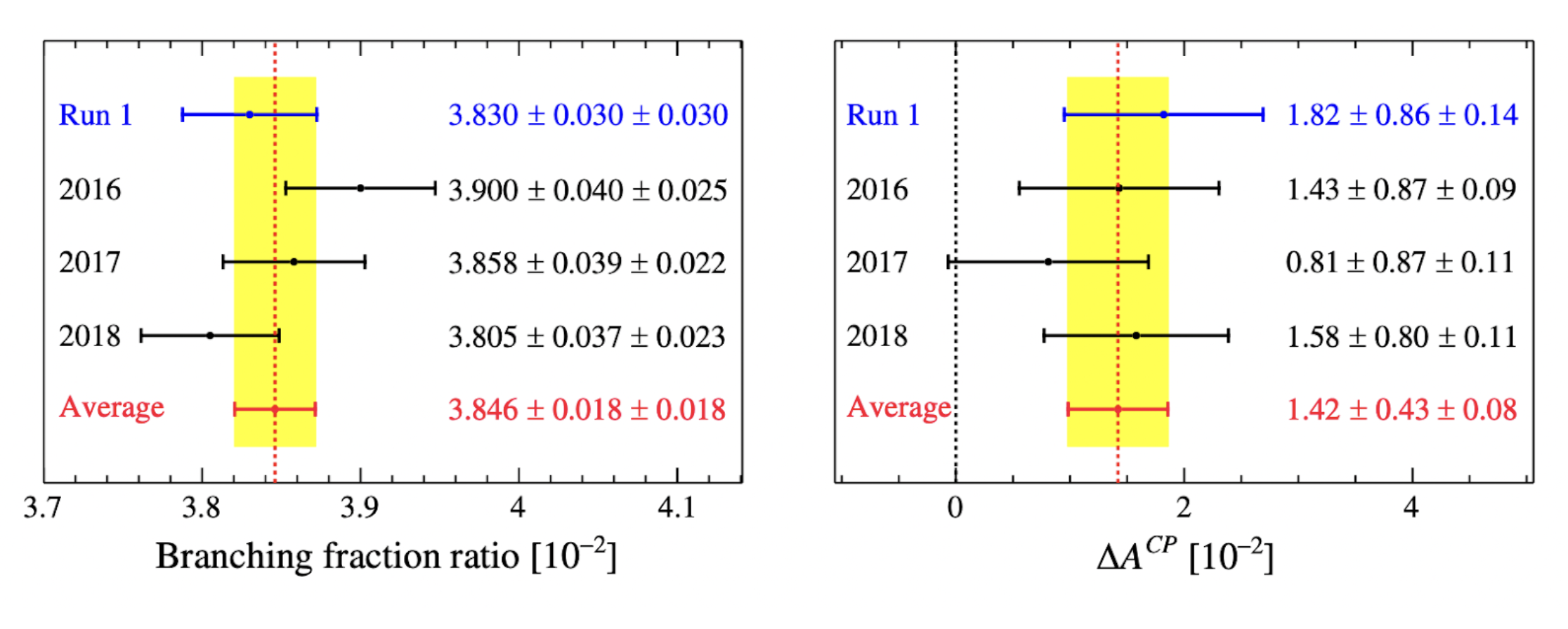New Milestones in direct CP Violation: Observation in Baryons and First Evidence in Beauty Mesons to J/Psi

A Milestone in Understanding the Matter-Antimatter Asymmetry
The LHCb collaboration has announced a groundbreaking achievement: the first-ever observation of CP violation in baryon decays. This result, presented at the Rencontres de Moriond EW conference and submitted for publication in Nature, opens a new frontier in our understanding of matter-antimatter asymmetry.
CP violation—differences in the behaviour of matter and antimatter—is a crucial ingredient in explaining why the observable universe consists predominantly of matter. While CP violation has been observed in mesons containing strange, charm, and beauty quarks, it had never before been detected in baryons, which make up the majority of the visible universe.
Using data from the Large Hadron Collider, the LHCb experiment observed CP violation in the decay of the Λb0 baryon into a proton (p), a kaon (K−), and two pions (π+π−). This discovery was made by measuring the CP asymmetry (ACP)—the relative difference in decay rates between matter (Λb0) and antimatter (Λ̄b0) states. The obtained result: ACP = (2.45 ± 0.46 ± 0.10)% deviates from zero with a statistical significance of 5.2 standard deviations, meeting the gold standard for an official observation in particle physics.

Mass distributions of Λb0 and Λ̄b0 decay products reveal a clear signature of CP violation, confirming the first-ever observation in baryons.
The Mystery of Matter-Antimatter Asymmetry
One of the fundamental open questions in physics is why the universe consists almost entirely of matter, despite the expectation that the Big Bang should have produced equal amounts of matter and antimatter. This imbalance suggests that a mechanism must have favored matter over antimatter, leading to the universe we observe today.
A key ingredient in this puzzle is CP violation, which refers to the breaking of charge-parity symmetry. CP symmetry implies that the laws of physics should remain unchanged if charges are swapped with their corresponding anticharges (charge conjugation, C) and their spatial coordinates are inverted (parity transformation, P). However, experiments have shown that CP symmetry is not perfectly conserved, which may help explain the observed matter dominance.
CP violation was first observed in neutral kaon decays in 1964, an achievement that earned James Cronin and Val Fitch the 1980 Nobel Prize in Physics. Later, Makoto Kobayashi and Toshihide Maskawa proposed a theoretical framework within the Standard Model that could accommodate CP violation, predicting the existence of at least three generations of quarks. This proposal was later confirmed and led to their 2008 Nobel Prize in Physics.
Over the past decades, CP violation has been observed in the decays of K mesons, B mesons, and D mesons, all of which are particles composed of a quark-antiquark pair. However, until now, no significant CP violation had been detected in baryon decays—particles composed of three quarks, such as protons and neutrons.
With the LHCb result, CP violation has now been observed across multiple types of particles, strengthening the Standard Model's framework while also hinting at potential new physics. Unlike mesons, baryons have three valence quarks, adding new complexity to how CP violation manifests. The detailed analysis of intermediate resonance states in Λb0 decays suggests that CP violation effects in baryons could be influenced by previously unexplored dynamics.
New Evidence for CP Violation in Λb0 → ΛK+K− Decays
In a recent update, the LHCb collaboration has provided further evidence for CP violation in Λb0 → ΛK+K− decays, marking another significant step in baryonic CP violation studies. The new result was presented at a CERN seminar, reinforcing the idea that CP violation extends beyond mesonic systems.
CP violation can manifest itself as the difference between the number of Λb0 → ΛK+K− decays and the number of Λ̄b0 → Λ̄K+K− decays. The plot below (not shown) illustrates this difference as observed in LHCb data.

Mass distributions of (left) Λb0 → ΛK+K− and (right) Λ̄b0 → Λ̄K+K− decays in resonance-dominated regions. Also shown are the fit results.
By analyzing 9 fb−1 of proton-proton collision data, LHCb physicists found strong evidence (above 3σ significance level) of CP violation in Λb0 → ΛK+K− decays. This study adds further complexity to our understanding of CP asymmetry, showing that it is not restricted to mesonic decays but also present in three-body baryonic decays.
First Evidence for CP Violation in Beauty Meson Decays to Charmonium
Adding to these significant findings, the LHCb collaboration has also reported the first evidence for direct CP violation in beauty meson decays to charmonium final states, observed in the B+ → J/ψπ+ decay channel. This result was obtained by comparing the CP asymmetry difference (ΔACP) between this decay and the favored B+ → J/ψK+ decay ΔACP = (1.42 ± 0.43 ± 0.08) × 10−2. The result deviates from zero by 3.2 standard deviations, providing strong evidence for CP violation in beauty meson decays to charmonium final states, and opening new directions in the study of direct CP violation.

Comparison of the RπK and ΔACP measurements from LHC Run 1 2016, 2017, and 2018 data and the average values. The error bars correspond to the sum of the statistical and systematic uncertainties in quadrature.
An important observable in this context is RπK, the ratio of CP asymmetries between the two decay modes, which serves as a clean probe for comparing CP violation effects in decays with different hadronic final states, offering sensitivity to potential contributions from physics beyond the Standard Model.
This measurement is particularly important because penguin contributions in B⁺ → J/ψπ⁺ decays are not CKM-suppressed with respect to the leading tree amplitude, unlike in B⁰ → J/ψK⁰ decays. As a result, this channel serves as an ideal probe for potential new physics contributions. These findings will contribute to a better understanding of how CP violation manifests in the b → c c̄ q transitions, crucial for testing the structure of the Cabibbo-Kobayashi-Maskawa (CKM) matrix and exploring possible new physics beyond the Standard Model.
Implications for Physics Beyond the Standard Model
While CP violation is predicted within the Standard Model, the amount of CP violation it allows is insufficient to explain the universe’s matter-antimatter asymmetry. Any deviation from SM predictions in CP-violating processes could indicate the presence of new physics, such as contributions from undiscovered particles or interactions beyond the current theoretical framework.
By providing the first direct evidence of direct CP violation in baryon decays and beauty meson decays to charmonium, the LHCb results open new avenues for testing the SM and searching for physics beyond it. Further studies at LHCb will explore whether the observed CP violation aligns with Standard Model predictions or points toward new interactions and particles. This result will also influence searches for lepton-flavour violation, tests of CP symmetry in other baryons, and analyses of exotic decay channels.
Looking Ahead
The first observation and growing evidence of CP violation in baryon decays, along with the first evidence of CP violation in beauty to charmonium decays, are a testament to LHCb’s world-leading expertise in heavy-flavour physics and mark an exciting new chapter in our quest to understand the fundamental forces shaping the universe.
With more data and improved analysis techniques, LHCb continues to push the boundaries of our understanding of CP violation. The upgraded LHCb detector for Run 3 already delivers higher-quality data, allowing for more precise measurements and further studies of CP violation in both baryon and meson decay channels. Future measurements of CP asymmetries will help determine whether these effects align with SM predictions or point to new physics.
For more details, refer to the presentation in Moriond, the LHCb seminar presentation, the Physical Review Letters publication, and the forthcoming scientific papers on these groundbreaking results.
Acknowledgment: The author would like to sincerely thank the LHCb management for their valuable input and comments on the final form of the article. Their insights and careful review greatly contributed to ensuring the accuracy and clarity of the content.
